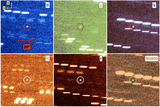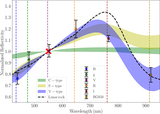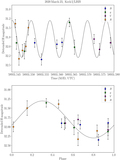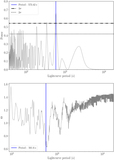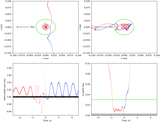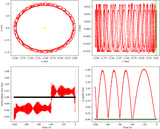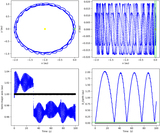Image Details
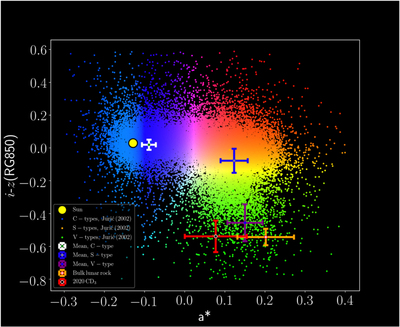
Caption: Figure 2.
The a* vs. i–z(RG850) colors of 2020 CD3, plotted with the a* vs. i–z colors of C-, S-, and V-type asteroids (Ivezić et al. 2001; Jurić et al. 2002), active comets (Solontoi et al. 2012), and Kuiper Belt objects (Ofek 2012). The colorization scheme of the data points as a function of a* and i–z is adapted from Ivezić et al. (2002), where blue corresponds to C-type asteroids, red corresponds to S-type asteroids, and green corresponds to V-type asteroids. We note that in this case, the measured RG850 magnitude of 2020 CD3 is plotted as a substitute for its z magnitude.
Copyright and Terms & Conditions
© 2020. The American Astronomical Society. All rights reserved.


